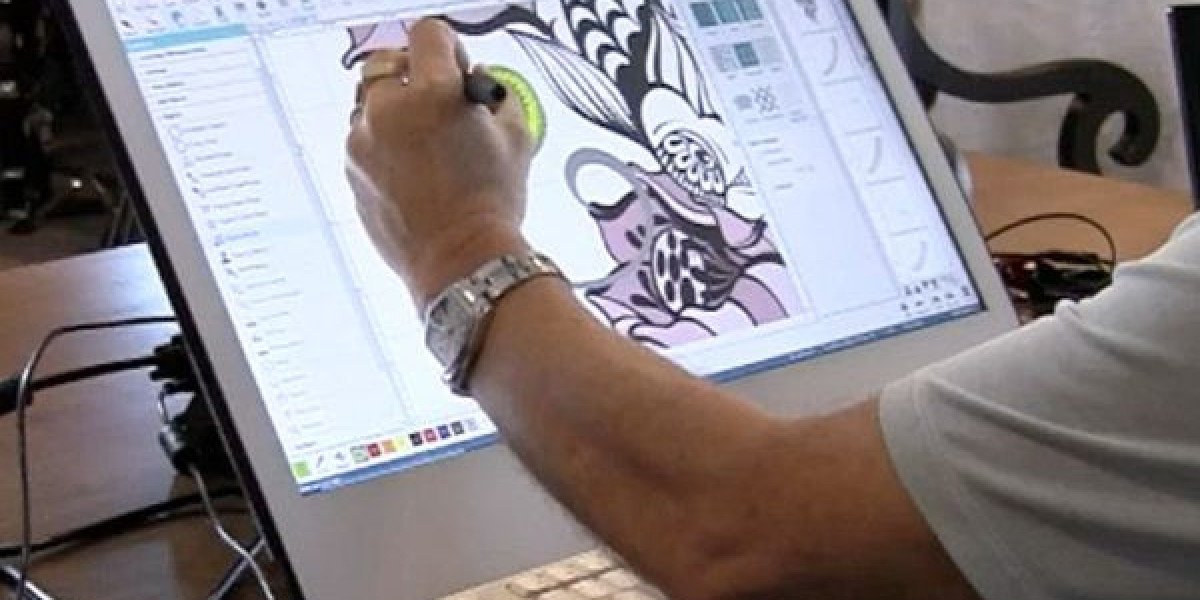Introduction
Digitizing embroidery designs is a crucial step in creating beautiful, professional-quality embroidery. However, this process is not without its challenges. Many beginners—and even experienced digitizers—make common mistakes that can impact the final outcome. Whether you're dealing with incorrect stitch density, poor file formats, or a lack of attention to fabric types, these errors can result in subpar embroidery that fails to meet expectations.
In this guide, we'll delve into digitizing embroidery designs: common mistakes and how to avoid them, offering actionable tips and insights to help you perfect your craft.
Why Is Digitizing for Embroidery So Important?
Digitizing is the process of converting artwork or a logo into a digital format that embroidery machines can read. This file acts as a set of instructions, dictating how the machine stitches the design onto the fabric. Poor digitizing can lead to issues like puckering, thread breakage, or distorted designs, making it essential to get the process right.
Common Mistakes in Digitizing Embroidery Designs
1. Overlooking Fabric Type
Not all fabrics behave the same during embroidery. Stretchy fabrics like spandex or jersey require specific adjustments, while heavy materials like denim demand entirely different considerations.
How to Avoid This Mistake:
- Analyze the fabric type before digitizing.
- Adjust stitch density, pull compensation, and underlay settings to match the fabric’s properties.
- Test your design on a scrap piece of the fabric to ensure it stitches well.
2. Incorrect Stitch Density
Stitch density refers to how closely stitches are placed together. Too much density can cause puckering, while too little may result in a thin, incomplete design.
How to Avoid This Mistake:
- Use your embroidery software to set the appropriate density for the fabric and design.
- Consider the thread type and thickness when determining density.
- Test different densities to find the ideal balance.
3. Ignoring Pull Compensation
Pull compensation is the adjustment made to counteract the pulling effect that occurs during stitching. Without it, your design may appear distorted or off-center.
How to Avoid This Mistake:
- Increase the width of stitches slightly to compensate for fabric shrinkage.
- Use software tools to calculate and apply pull compensation based on your fabric.
4. Poor Design Scaling
Scaling a design up or down without proper adjustments can lead to thread breakage, uneven stitching, or loss of detail.
How to Avoid This Mistake:
- Always re-digitize a design when scaling significantly.
- Adjust stitch lengths, densities, and underlay settings for the new size.
5. Neglecting Underlay Stitches
Underlay stitches serve as the foundation for embroidery, providing stability and preventing puckering. These stitches create a base layer that supports the top stitches, ensuring the design remains consistent and secure. Skipping or improperly setting underlay stitches during digitizing for embroidery can compromise the design’s integrity, leading to uneven or distorted results. To avoid this, it’s essential to select the appropriate underlay type, such as edge run or zigzag, based on the design and fabric. Proper digitization ensures a flawless finish and enhances the overall quality of the embroidery.
How to Avoid This Mistake:
- Select the appropriate underlay type (e.g., edge run, zigzag) based on the design and fabric.
- Ensure your underlay settings provide sufficient support for the top stitches.
6. Using the Wrong File Format
Embroidery machines require specific file formats, such as .DST, .PES, or .EXP, to function correctly. Using the wrong format can cause errors or prevent the machine from reading the design.
How to Avoid This Mistake:
- Research the file format compatible with your embroidery machine.
- Save your design in multiple formats if working with various machines.
7. Lack of Testing
Skipping test runs is one of the most common mistakes in digitizing embroidery designs. Without testing, you risk discovering issues only after completing the final product.
How to Avoid This Mistake:
- Always run a test stitch on a similar fabric before production.
- Check for issues like thread tension, puckering, or design alignment.
Tips for Perfect Digitizing Embroidery Designs
Master Your Software
Invest in high-quality embroidery digitizing software and take the time to learn its features. Software like Wilcom, Hatch, or Pulse offers tools for adjusting stitch types, densities, and other parameters.
Understand Stitch Types
Familiarize yourself with different stitch types, such as satin, fill, and running stitches, and know when to use each for optimal results.
Start Simple
If you’re new to digitizing, start with simple designs. As you gain experience, you can tackle more complex patterns.
Learn from Mistakes
Every error is an opportunity to improve. Keep track of what works and what doesn’t to refine your skills.
Frequently Asked Questions
What is the best fabric for embroidery?
While many fabrics can be embroidered, materials like cotton, linen, and denim are popular due to their stability and ability to hold stitches well.
How do I choose the right thread for my design?
Consider the fabric type, design complexity, and desired finish. Polyester threads are durable, while rayon threads offer a vibrant sheen.
Can I digitize designs without software?
While manual techniques exist, software streamlines the process and ensures greater accuracy.
Conclusion
Digitizing embroidery designs: common mistakes and how to avoid them is a topic that every embroidery enthusiast should master. By understanding the intricacies of fabric behavior, stitch settings, and software tools, you can elevate your embroidery projects to a professional level.
Avoiding these common mistakes will save time, reduce material waste, and ensure your designs consistently impress. Whether you’re a hobbyist or a professional, investing in your digitizing skills is the key to creating embroidery that stands out. Happy stitching!








